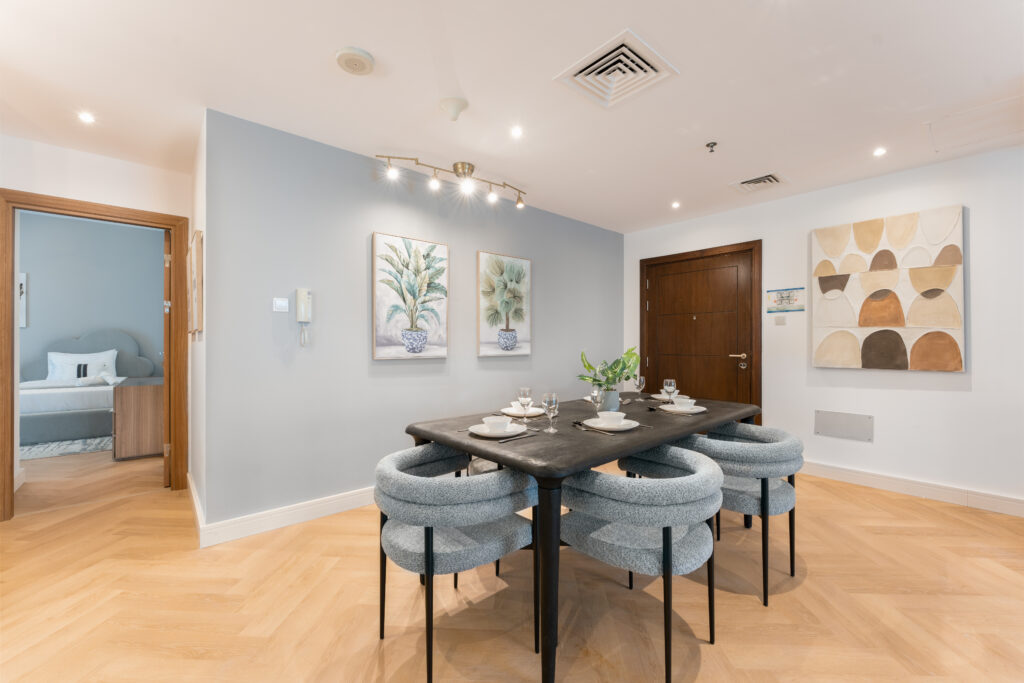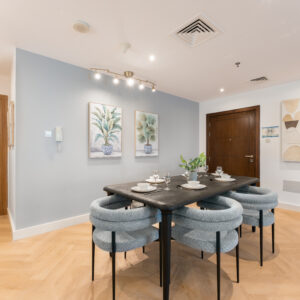As you or your loved ones age, ensuring a safe living environment becomes a top priority. Making modifications to the home is a proactive and thoughtful way to address potential hazards and enhance senior safety. From installing handrails in the bathroom to eliminating trip hazards and improving lighting, there are numerous practical and effective ways to create a secure and comfortable living space. In this article, we will explore some of the best ways to modify the home for senior safety, enabling you or your loved ones to confidently age in place.

This image is property of images.pexels.com.
1. Lighting
Good lighting is essential for senior safety at home. By increasing overall lighting, you can make sure that every area of your home is well-lit and easily visible. This can help prevent accidents and falls caused by poor visibility. Consider using brighter bulbs or adding additional light fixtures to brighten up your living spaces.
Motion-sensor lights are another great addition to your home. These lights automatically turn on when they detect motion, providing instant illumination in areas such as hallways or staircases. This can be particularly helpful during the night when it may be harder to navigate your home.
To further enhance safety, installing nightlights in key areas can be beneficial. Nightlights provide a soft and gentle light during the night, making it easier for you to navigate your home without tripping or falling. Place them in hallways, bathrooms, and any other areas where you may need to walk during the night.
Consider upgrading to a smart lighting system. With smart lighting, you can control the lights in your home with ease. You can dim or brighten them using your smartphone or voice commands. This can be especially convenient for seniors with limited mobility, allowing them to adjust the lighting without having to get up.
2. Flooring
Ensuring that your flooring is safe and hazard-free is crucial for senior safety. Start by removing any tripping hazards such as loose rugs, clutter, or uneven surfaces. By keeping the floor clear and free from obstacles, you can significantly reduce the risk of falls.
Consider adding carpet or rugs with non-slip backing in areas such as hallways or living rooms. These provide a cushioned surface and help prevent slips and falls. Make sure the edges of the rugs are secured with double-sided tape to avoid tripping.
When choosing flooring, opt for smooth and slip-resistant materials that provide good traction. Slippage can be a common cause of accidents, especially in bathrooms and kitchens. Non-slip flooring options such as vinyl, cork, or rubber can be excellent choices for these areas.
Using contrasting colors for visual clarity is also beneficial, especially on stairs. By painting the edges of steps or using different colored treads, you create a clear visual distinction, making it easier to navigate stairs safely.

This image is property of images.pexels.com.
3. Stairs and Steps
Stairs and steps can be particularly challenging for seniors. Adding handrails on both sides of stairs provides essential support and stability. Handrails allow you to maintain your balance while ascending or descending the staircase, reducing the risk of falls. Make sure the handrails are sturdy and properly installed.
To further enhance safety on stairs, consider adding non-slip treads. These adhesive strips provide extra grip and traction, reducing the chances of slipping. Install them on each step for added stability.
Proper lighting on staircases is crucial. Make sure the stairs are well-lit to improve visibility and prevent accidents. Consider adding overhead lighting or installing small light fixtures along the staircase. Motion-sensor lights can be particularly useful on staircases, as they ensure instant illumination when you approach.
For seniors with mobility issues, stairlifts or ramps can be excellent modifications. Stairlifts provide a secure and easy way to navigate stairs, eliminating the need for climbing. Ramps, on the other hand, offer a more accessible entry and exit for those using wheelchairs or walkers.
4. Bathroom Modifications
The bathroom can be a hazardous area for seniors due to its slippery surfaces. To make it safer, install grab bars near the toilet and shower. These bars provide stability and support when sitting down or standing up, as well as when entering or exiting the shower. Make sure the grab bars are securely mounted and can bear weight.
Use non-slip mats in the shower and bathtub to prevent slips and falls. These mats provide a textured surface that enhances traction and reduces the risk of accidents. Additionally, a shower chair or bench can offer stability and convenience while bathing.
Consider a walk-in bathtub or shower for added safety and ease of use. These modifications eliminate the need to step over high bathtub walls, reducing the risk of falls. Walk-in showers also provide ample space for maneuvering and offer hand-held showerheads for added convenience.
Raising the toilet seat height can be beneficial for seniors with mobility issues. By installing an elevated seat or using a raised toilet seat attachment, you can make it easier to sit down and stand up from the toilet.

This image is property of images.pexels.com.
5. Bedroom Safety
Creating a safe and comfortable bedroom environment is essential for senior well-being. Choose a bed with a firm mattress and appropriate height. A bed that is too low can make it challenging to get in and out, while a mattress that is too soft may not provide adequate support. Find a balance that suits your comfort and mobility needs.
Installing bed rails can offer added stability and support while getting in and out of bed. Bed rails provide a convenient handhold, reducing the risk of falls. Make sure the rails are securely attached and are at a height that allows for easy gripping.
Place nightstands within easy reach of the bed. This ensures that essential items like medications, water, or a phone are readily accessible without having to get out of bed. Having these items nearby eliminates the need to navigate in the dark, reducing the risk of accidents.
Ensure clear pathways around the bed to prevent tripping hazards. Keep the floor free from clutter or loose rugs that may obstruct your walking path. By maintaining a clear and unobstructed space, you can move around your bedroom safely.
6. Kitchen Modifications
The kitchen is another area where modifications can significantly enhance senior safety. Install anti-scald devices on your faucets to prevent accidental burns. These devices regulate water temperature and ensure that it doesn’t get dangerously hot.
Lower countertop heights for easier access. If possible, adjust the countertop height to a level that allows you to work comfortably while seated. This reduces strain on your back, neck, and shoulders and makes meal preparation more manageable.
Consider using lever-style handles on cabinets and appliances. These handles are easier to grip and require less strength to open or close. By replacing traditional knobs with lever-style handles, you can make your kitchen more user-friendly for seniors.
Organize frequently used items within reach. Store frequently used cookware, utensils, and ingredients in easily accessible cabinets and drawers. This eliminates the need to reach or bend excessively, reducing the risk of strain or falls.
7. Living Room Safety
Arranging furniture for wide pathways is crucial for senior safety in the living room. Ensure that there is enough space between furniture pieces for comfortable and safe movement. Avoid cluttering the room with unnecessary items that may obstruct your walking path.
Secure loose rugs or remove them altogether. Loose rugs can easily trip you up, so make sure they are properly secured with rug tape or non-slip pads. If a rug frequently slides or curls up, it may be safer to remove it completely.
Use stable and sturdy chairs with armrests. Armrests provide support and assist with sitting down or getting up from a chair. Look for chairs that have a solid base and are designed to prevent tipping over.
Install cord organizers for trip prevention. Exposed cords can pose a hazard, as they can be easily tripped over. Use cord organizers or conceal cords behind furniture to keep them out of the way and minimize the risk of accidents.
8. Home Security
Enhancing home security is essential for senior safety. Install a doorbell camera for added security and peace of mind. Doorbell cameras allow you to see and communicate with visitors without having to open the door, providing an extra layer of protection.
Use motion-activated outdoor lighting to deter potential intruders and increase visibility around your property. These lights automatically turn on when they detect motion, illuminating the area and alerting you to any activity.
Consider a monitored alarm system with medical alerts. These systems provide 24/7 monitoring and can be connected to emergency responders or a designated contact in case of a medical emergency. Medical alerts ensure that help is immediately dispatched if needed.
Secure windows and doors with reliable locks. Regularly check the locks on your windows and doors to ensure they are in good working order. Consider adding additional security measures, such as deadbolts or security bars, for added protection.
9. Accessibility
Creating a more accessible home environment is crucial for senior safety and independence. Install ramps for easy entry and exit, especially at the main entrance. Ramps provide a smooth and gradual incline, eliminating the need to navigate stairs. Ensure that the ramp has handrails for added support.
Widening doorways is another modification that enhances accessibility, particularly for wheelchair users. By expanding doorways, you provide enough space for easy passage, eliminating potential obstacles and constraints.
Consider installing an elevator or stairlift if you have multiple levels in your home. These modifications allow seniors with mobility issues to navigate the different levels effortlessly. Elevators are especially beneficial for those who cannot use stairs or have difficulty walking.
Add handrails on both sides of hallways to improve stability and support. Handrails along hallways provide something to hold onto while walking, reducing the risk of falls. Make sure the handrails are securely mounted and extend the length of the hallway for continuous support.
10. Technology and Assistance Devices
Utilizing technology and assistance devices can significantly improve senior safety and well-being. Use medical alert systems for emergencies. These systems allow you to call for help with the push of a button. In case of a fall or medical emergency, immediate assistance can be summoned.
Install fall detection devices for an added layer of protection. These devices can automatically detect falls and send distress signals to designated contacts or emergency services, even if you are unable to do so yourself.
Consider incorporating voice-activated assistants for convenience. Virtual assistants like Amazon Alexa or Google Assistant can assist with various tasks, such as setting reminders, making phone calls, or controlling smart devices. Voice commands eliminate the need for manual operation, making daily tasks more manageable.
Utilize wearable health monitoring devices. These devices can track vital signs, activity levels, and sleep patterns to monitor overall health. They provide valuable insights and can detect potential health issues early on, helping you stay proactive about your well-being.
By implementing these modifications and utilizing technology, you can create a safer and more accessible home environment for seniors. Remember to assess your specific needs and consult with professionals if necessary to ensure that the modifications suit your requirements. Prioritizing senior safety allows for independent living and offers peace of mind for both seniors and their loved ones.
